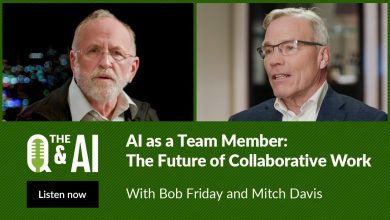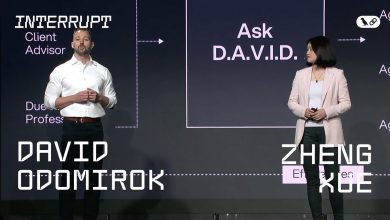 Agentic Process Automation (APA), powered by agentic AI, reimagines Michael Hammer’s Business Process Re-engineering (BPR) for the digital age, building on his call for radical process redesign while leveraging the unprecedented capabilities of intelligent, autonomous agents.
Agentic Process Automation (APA), powered by agentic AI, reimagines Michael Hammer’s Business Process Re-engineering (BPR) for the digital age, building on his call for radical process redesign while leveraging the unprecedented capabilities of intelligent, autonomous agents.
Where Hammer’s BPR used early IT systems to streamline workflows, APA employs agentic AI—systems that can reason, learn, adapt, and make decisions independently—to create dynamic, self-optimizing processes.
This modern evolution of BPR amplifies Hammer’s principles, enabling organizations to achieve transformative efficiency, agility, and customer value in ways previously unattainable.
This article outlines how APA offers a modern version of BPR, aligned with Hammer’s core tenets but supercharged by agentic AI.
1. Radical Redesign Through Autonomous Intelligence
Hammer’s BPR emphasized obliterating outdated processes and rethinking them from scratch. APA takes this further by deploying agentic AI to autonomously analyze, redesign, and optimize entire workflows. Unlike static automation tools, agentic AI can:
- Map and Assess Processes: AI agents analyze end-to-end processes in real time, identifying inefficiencies, redundancies, or bottlenecks using data-driven insights, far beyond human-led process mapping.
- Propose Radical Alternatives: By simulating scenarios and leveraging predictive models, agents propose innovative process designs that eliminate non-value-adding steps, such as replacing manual approvals with AI-driven decision engines.
- Iterate Continuously: Unlike the one-time redesigns of traditional BPR, APA enables ongoing reinvention as agents adapt processes to changing conditions (e.g., market shifts or new regulations).
Example: In supply chain management, APA agents could redesign procurement by autonomously negotiating with suppliers, optimizing inventory based on predictive demand, and rerouting logistics in real time to avoid disruptions—achieving Hammer’s vision of radical efficiency at scale.
2. Customer-Centricity Amplified by AI Insights
Hammer stressed that processes should deliver maximum value to customers. APA enhances this by using agentic AI to deeply understand and anticipate customer needs:
- Personalized Process Execution: AI agents analyze customer data (e.g., behavior, preferences) to tailor processes dynamically, ensuring outcomes like faster delivery or customized offerings.
- Proactive Problem Resolution: Agents predict customer pain points (e.g., delays or service issues) and adjust processes preemptively, enhancing satisfaction without human intervention.
- Real-Time Feedback Integration: APA systems incorporate customer feedback instantly, allowing processes to evolve in alignment with customer expectations.
Example: In retail, APA could reengineer the customer service process by deploying AI agents that handle inquiries, predict customer needs based on purchase history, and escalate complex issues to human teams only when necessary, delivering seamless experiences.
3. End-to-End Optimization with Collaborative Agents
Hammer’s BPR broke down departmental silos to focus on end-to-end processes. APA advances this through multi-agent systems that collaborate across functions:
- Orchestrated Workflows: Agentic AI systems coordinate tasks across departments (e.g., finance, operations, marketing), ensuring seamless data flow and process alignment without human handoffs.
- Cross-Functional Decision-Making: Agents share insights and make collective decisions, such as reallocating resources during a supply chain disruption, optimizing the entire value chain.
- Elimination of Silos: By integrating disparate systems and data sources, APA creates unified processes that align with organizational goals, fulfilling Hammer’s vision of holistic redesign.
Example: In healthcare, APA could reengineer patient care by coordinating scheduling, diagnostics, and billing through interconnected AI agents, reducing wait times and administrative errors while improving patient outcomes.
4. Technology as a Transformative Enabler
Hammer saw IT as critical to BPR, enabling new ways of working. APA takes this to new heights with agentic AI’s advanced capabilities:
- Intelligent Automation: Beyond rule-based automation, APA uses AI agents that learn from data, adapt to new scenarios, and execute complex tasks like contract analysis or demand forecasting.
- Real-Time Scalability: APA systems scale instantly to handle fluctuating workloads, unlike the rigid IT systems of Hammer’s era, ensuring resilience in dynamic environments.
- Integration of Emerging Tech: APA leverages AI alongside IoT, blockchain, or cloud computing to create interconnected ecosystems, such as smart factories where agents optimize production in real time.
Example: In manufacturing, APA could reengineer production by deploying AI agents to monitor equipment health, adjust schedules based on real-time demand, and optimize energy use, achieving dramatic cost and efficiency gains.
5. Empowerment and Simplification Through Autonomy
Hammer advocated empowering workers and simplifying processes. APA extends this by automating routine decisions and augmenting human capabilities:
- Employee Empowerment: AI agents handle repetitive tasks, freeing employees to focus on strategic, creative work, aligning with Hammer’s vision of reducing bureaucratic overhead.
- Simplified Workflows: Agents eliminate unnecessary steps by reasoning through process logic, such as bypassing redundant approvals or automating compliance checks.
- Augmented Decision-Making: APA provides employees with AI-driven insights (e.g., predictive analytics), enhancing their ability to make informed decisions quickly.
Example: In financial services, APA could reengineer loan processing by automating credit checks, risk assessments, and approvals, while empowering loan officers with AI-generated insights to focus on customer relationships.
6. Outcome-Driven Metrics with AI Precision
Hammer’s BPR targeted dramatic improvements in metrics like cost, time, and quality. APA delivers measurable outcomes with greater precision:
- Quantifiable Gains: AI agents track KPIs in real time, optimizing processes to achieve specific targets, such as reducing order-to-delivery time by 70% or cutting costs by 50%.
- Dynamic Benchmarking: APA continuously benchmarks performance against industry standards or competitors, using web and market data to ensure processes remain best-in-class.
- Predictive Success Metrics: Agents forecast the impact of process changes, allowing organizations to prioritize high-impact reengineering efforts.
Example: In logistics, APA could reengineer delivery routes using AI agents that analyze traffic, weather, and demand patterns, achieving measurable reductions in fuel costs and delivery times.
Overcoming BPR Challenges with APA
Hammer’s BPR faced challenges like resistance to change, implementation failures, and cultural misalignment. APA mitigates these:
- Reduced Resistance: By automating routine tasks and providing clear benefits (e.g., time savings), APA gains employee buy-in more easily than traditional BPR.
- Iterative Implementation: APA’s adaptive nature allows for gradual, data-driven rollouts, reducing the risk of large-scale failures.
- Cultural Alignment: AI agents provide transparent insights into process changes, fostering trust and collaboration across teams.
APA as the Future of BPR
APA fulfills Hammer’s vision of radical, technology-enabled process reinvention while addressing the demands of a hyper-connected, fast-paced world. Agentic AI’s ability to reason, adapt, and collaborate makes APA a dynamic, living evolution of BPR, capable of continuously reengineering processes in response to real-time data and market shifts. By combining Hammer’s principles with AI’s transformative power, APA enables organizations to build agile, customer-centric, and resilient operations, positioning them to thrive in an era of relentless change.
Example in Action: A global retailer could use APA to reengineer its supply chain, with AI agents autonomously managing inventory, predicting demand, negotiating with suppliers, and optimizing last-mile delivery. This achieves Hammer’s goal of dramatic performance gains—faster delivery, lower costs, and higher customer satisfaction—while adapting continuously to market trends.
In summary, APA modernizes BPR by infusing it with the intelligence, adaptability, and scalability of agentic AI, delivering on Hammer’s promise of radical transformation while unlocking new possibilities for innovation and competitiveness.



